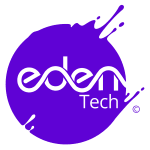- About Us
- Product List
- StructSure
-
-
-
Discover precision and performance with Kayaku’s StructSure™ division, offering advanced photoresists and specialty chemicals for microelectronics and MEMS manufacturing. Achieve exceptional patterns and performance in advanced lithography, specialty displays, packaging, and optoelectronics with our high-quality materials.
-
Permanent Photo-patternable Epoxies
SU-8
KMPR®
PermiNex®
-
Temporary Lift-off Resists
LOR & PMGI
PMMA
UniLOR® N **NEW**
-
Temporary Plating Resists
TempKoat® P **NEW**
TempKoat® N **NEW**
Ancillaries
-
SU-8 Dry Film Series
Permanent Photo-patternable Low k Dielectrics
-
-
- Design Fabrication Services
-
-
Capabilities
• Coatings
• Lithography (single and multi-layer)
• Microfluidics (mold through single layer-chip’s)
• Feasibility DEMO’s
• New Product Introduction DEMO (on-site availability)
-
Have Questions? Talk to an engineer
-
"*" indicates required fields
-
- Paratronix
-
-
-
Discover success with Paratronix’s superior conformal coating services. Explore their full line of products and find more information at paratronix.com.
-
-
-
- Dupont
-
-
-
Benefit from Kayaku Advanced Materials’ 25-year partnership with DuPont Electronic Materials, integrating distribution and licensing of semiconductor and advanced packaging electronic materials, alongside value-added services. Harness our chemical knowledge, applications experience, and process engineering expertise for unparalleled results.
-
Semiconductor Technologies
Broadband Resists for Wet Etch
Advanced i-Line Resists (3-10 µm)
Positive DUV Resists
Negative DUV Resists
Lift-off Layers
-
Advanced Packaging Technologies
Plating Chemistries
Thick Resists
Electrophoretic Resists
Dielectrics
Electronic Materials
-
-
- Micro Resist Technology
- EdenTech
-
-
Capabilities
-
Have Questions? Talk to an engineer
-
"*" indicates required fields
-
- StructSure
- Products by Applications
- News
- Careers
- Contact Us
UniLOR® N: FAQs
What type of resist is UniLOR® N?
UniLOR® N is a chemically amplified, negative-tone resist intended for high temperature lift-off applications. It can be used as a single layer lift-off resist or as the imaging resist on top of PMGI or LOR in a bi-layer lift-off scheme.
What are common applications for UniLOR® N?
Single layer lift-off resist using metal evaporation or physical vapor deposition processes requiring < 3 microns of metallization.
What is the casting solvent of the resist?
The solvent contained in UniLOR® N is PGMEA / Cyclopentanone.
Does UniLOR® N require a primer?
HMDS priming is recommended on bare silicon.
Is an EBR removal step necessary/recommended and what EBR solvent can be used?
Customers should use EBR PG for best EBR results.
Is it necessary to do a post exposure bake? Hard bake?
The PEB step is necessary to complete the thermally driven catalytic reaction that causes the exposed resist to become insoluble to the aqueous developer. A hard bake is not required, as the resist is meant to be temporary and stripped post-processing.
How controllable is the sidewall angle?
The sidewall profile may be varied by exposure dose and post exposure bake temperature.
What is the resist lift-off process?
Kayaku Advanced Materials’s Remover PG (NMP-based) or DuPont’s INTERVIA™ 2011 Remover (DMSO/GBL based) are recommended for lift-off.
Heating and ultrasonication can improve lift-off quality and rates.
Lift-off times range from 10 – 30 minutes for complete lift-off depending on heat and sonication conditions.






